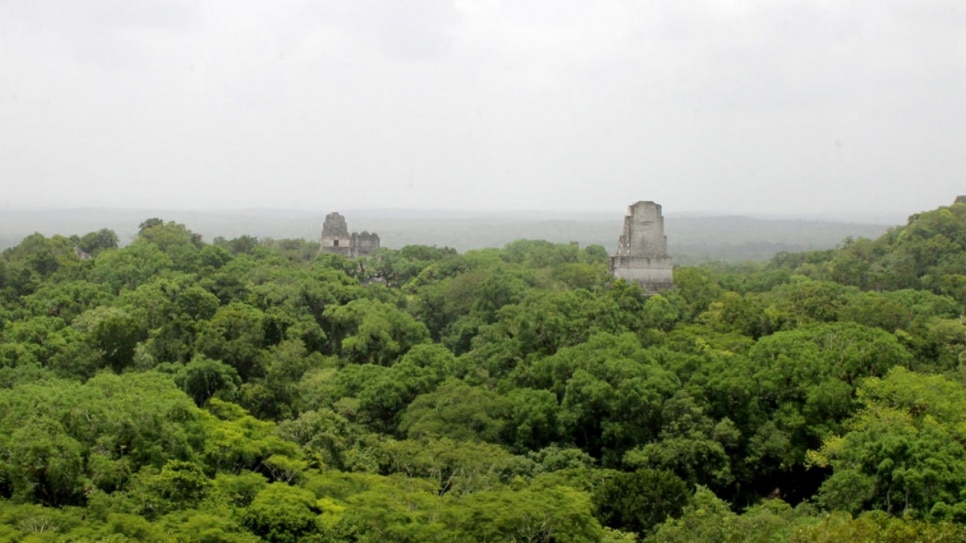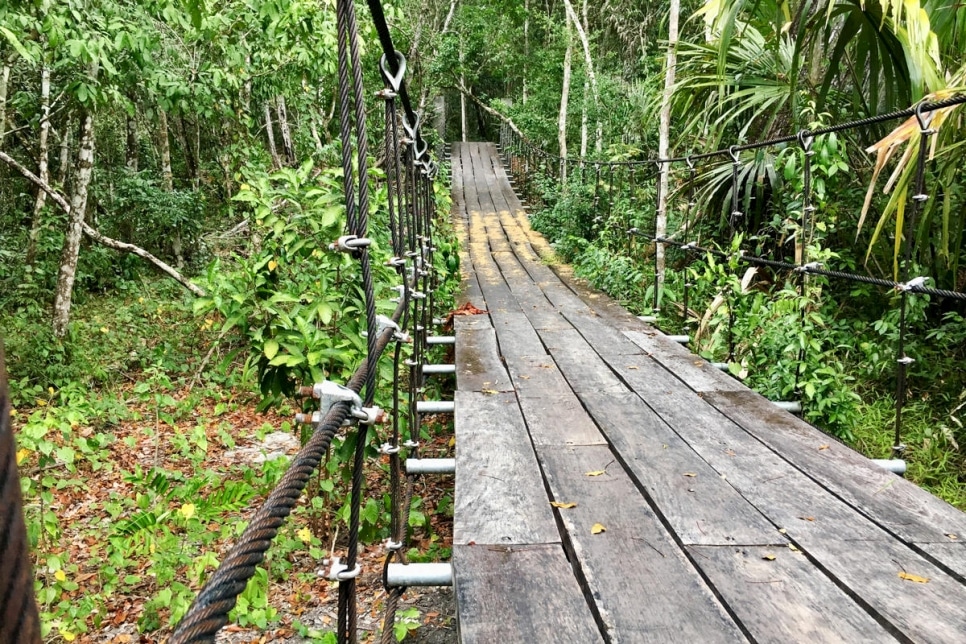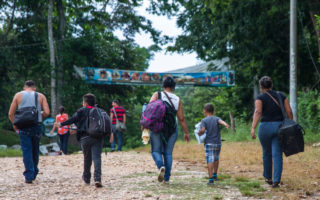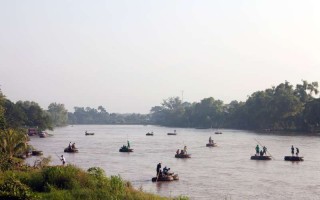
Ancient Mayan ruins emerge from the rainforest in Tikal National Park, Guatemala, July 2018. © UNHCR/PABLO PALOMO
As rangers in some of Central America’s most biodiverse national parks, refugees and asylum-seekers get a fresh start while protecting threatened plant and animal species.
Although his workday starts at sunrise, Josué does not need to set an alarm. The raucous shrieks and calls of the forest dawn chorus are more than enough to rouse the 19-year-old, a newly minted ranger now working in one of the most biodiverse spots on earth, Guatemala’s El Mirador National Park.
For Josué, an asylum-seeker who fled one of Honduras’ most dangerous cities, the new job as a ranger is nothing short of a dream come true.
“When I was little, I used to watch nature shows on TV. They were my favourite. This job is like being in the middle of one of those shows,” said Josué, who was forced to flee Honduras at age 16, after he rebuffed the attempts of a gang to recruit him and they retaliated with a brutal attack that could easily have killed him. “I always dreamed of such a job.”
Josué is among nine asylum-seekers and refugees hired and trained to work as rangers in Guatemala’s national park system. It includes tropical forests in the north-eastern Petén region that make up the largest protected area in Central America, and three UNESCO-recognized biosphere reserves, as well as spectacular Mayan ruins.
“When I was little, I used to watch nature shows on TV … This job is like being in the middle of one.”
As rangers, they are responsible for maintaining the trails used by visitors and monitoring the native flora and fauna, which includes threatened animals such as Baird’s tapirs and the scarlet macaw, as well as pumas and jaguars.
The rangers spend 15-day-long stints inside the parks, sleeping in rudimentary camps, before returning home for 15 days off.

A suspension bridge spans a gully inside Guatemala’s El Mirador National Park, where asylum seekers work as rangers. © UNHCR/Alexis Masciarelli
On his first sortie into the Dos Lagunas National Park, another one of the other new rangers, Alejandro, came across paw prints and a patch of matted grass littered with pheasant feathers, where he believes a big cat had recently bedded down and eaten breakfast. The near-sighting thrilled Alejandro,* a 21-year-old who worked in construction back home in Honduras before he, too, was targeted for having refused to join one of the armed gangs that terrorize local residents.
Gang threats, chronic violence and persecution in northern Central America have forced some 720,000 people in the region to flee their homes, seeking safety in distant parts of their country or abroad, as of the end of last year. By December 2019, some 121,300 Hondurans had applied for asylum or refugee status abroad, according to statistics from UNHCR, the UN Refugee Agency.
Young people are particularly vulnerable. Daring to resist recruitment into a gang – as both Josué and Alejandro did – can prove a death sentence. After he turned the gang down, Josué was chased down and shot. He was hit but survived his injuries.
“Leaving Honduras was a very difficult journey for me, but it was a question of life and death,” he recalled.
For his fellow ranger Alejandro, it finally sank in that he had no choice but to flee when a gang member told him, “Either you join or we’re coming for you and your family.” His family fled first, to Guatemala, and Alejandro followed soon after.
“We’re making it so that future generations can see all the plants and animals we have here.”
Finding a job tends to be a major obstacle for those forced to leave both their countries and support networks behind. But the current coronavirus pandemic, with its lockdowns aimed at preventing the virus’ spread, has made securing steady employment even more difficult for asylum-seekers like Josué and Alejandro.
For them and the other asylum-seekers and refugees hired as park rangers, the jobs represent a lifeline – a rare opportunity to support their families and contribute to their host communities in the midst of the pandemic. They were hired through Empleos Verdes, or Green Jobs, a programme run by the environmental organization FUNDAECO and the children’s advocacy group El Refugio de la Niñez. The programme receives support from UNHCR.
“It’s a great opportunity,” said Abel Santos, El Refugio de la Niñez’ coordinator in the Petén region. “The park rangers protect something that belongs to all of humanity.”
Alejandro concurred.
“Ours is a really important job,” he said. “We’re saving the lives of animals and protecting resources that belong to everyone.”
Guatemala is one of the most biodiverse countries in the world, according to the Rainforest Alliance, an organization dedicated to preserving the world’s remaining tropical forests. But, sadly, the group says what it calls Guatemala’s “astounding diversity of plant and animal life” is under threat by deforestation, illegal logging and the illicit wildlife trade, as well as climate change.
In light of the perils facing the national park where he works, Alejandro says he feels the new job is that much more important.
“We’re making it so that future generations can see all the plants and animals we have here,” he said.
* Names have been changed due to the threats facing both asylum-seekers.
Originally published on UNHCR on 5 June 2020





